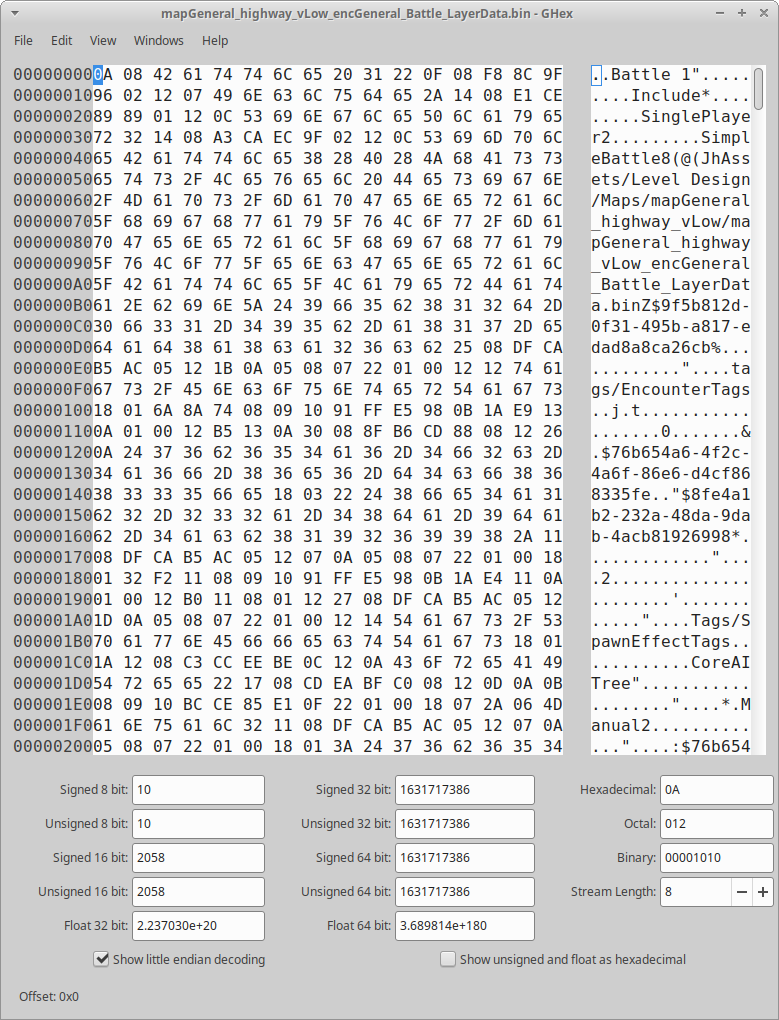Looking through the map files, there’s a pretty clear similarity between the layer and .json contract files.
There’s a few things I’m wondering might be possible:
1: Adding extra mechs to the spawners in both the layer and .json files. I saw cWolf’s mission control mod can do 5 and 6 mech drops and I wondered if perhaps the layer lancedef won’t freak out if you tell it to add an extra mech. (Tweaking only the .json won’t work because there are clearly four slots in the layer, but what if you also tweaked the layer?)
2: Keeping the same lance spawn points but cut-and-pasting in the logic from three way battle layers/jsons to enable things like targetally lances becoming hostiletoall in Target Acquisition.
3: Cut-and-pasting most of one layer (and .json) into another and changing the zone numbering to avoid duplicates.
The other thing I’m trying to figure out is a way to have secondary mission objectives translate into flashpoint decisions. Ideally the only primary objective would be “get to the extraction point”, the “withdraw” button would be disabled, and completing secondary objectives would enable/disable conversation options.
After the mission, there would be a conversation led by a flashpoint decision tree where only the outcome achieved by the secondary objectives was selectable. So you’d see something like:
[Flashpoint Decision:Flawless Victory]. “Ladies and gentlemen, we pulled it off.”
[FP: Badguy and hostages died] “Well we got Badguy but we lost the Hostage convoy on the way out.”
[FP: Badguy and hostages lived]. “We got the hostages out, but Badguy is still out there.”
[FP: Evaced] “This definitely isn’t the outcome we wanted, but at least we got some of our materiel back.”
[FP: Abject Failure] “...Damn.”
The first one would complete the FP with a huge/rare reward, the second with a much less impressive reward, the last three would give you the option to go after Badguy again in a more standard assassinate mission and try to improve/salvage your contract result, or complete the flashpoint (with a moderate reward for outcome three and barely any reward for the last two).
Ideally I would be able to track successes across multiple flashpoint missions without having to get too crazy on the branching, but still allow the player’s choices to determine the outcome of the flashpoint.
There’s a few things I’m wondering might be possible:
1: Adding extra mechs to the spawners in both the layer and .json files. I saw cWolf’s mission control mod can do 5 and 6 mech drops and I wondered if perhaps the layer lancedef won’t freak out if you tell it to add an extra mech. (Tweaking only the .json won’t work because there are clearly four slots in the layer, but what if you also tweaked the layer?)
2: Keeping the same lance spawn points but cut-and-pasting in the logic from three way battle layers/jsons to enable things like targetally lances becoming hostiletoall in Target Acquisition.
3: Cut-and-pasting most of one layer (and .json) into another and changing the zone numbering to avoid duplicates.
The other thing I’m trying to figure out is a way to have secondary mission objectives translate into flashpoint decisions. Ideally the only primary objective would be “get to the extraction point”, the “withdraw” button would be disabled, and completing secondary objectives would enable/disable conversation options.
After the mission, there would be a conversation led by a flashpoint decision tree where only the outcome achieved by the secondary objectives was selectable. So you’d see something like:
[Flashpoint Decision:Flawless Victory]. “Ladies and gentlemen, we pulled it off.”
[FP: Badguy and hostages died] “Well we got Badguy but we lost the Hostage convoy on the way out.”
[FP: Badguy and hostages lived]. “We got the hostages out, but Badguy is still out there.”
[FP: Evaced] “This definitely isn’t the outcome we wanted, but at least we got some of our materiel back.”
[FP: Abject Failure] “...Damn.”
The first one would complete the FP with a huge/rare reward, the second with a much less impressive reward, the last three would give you the option to go after Badguy again in a more standard assassinate mission and try to improve/salvage your contract result, or complete the flashpoint (with a moderate reward for outcome three and barely any reward for the last two).
Ideally I would be able to track successes across multiple flashpoint missions without having to get too crazy on the branching, but still allow the player’s choices to determine the outcome of the flashpoint.


